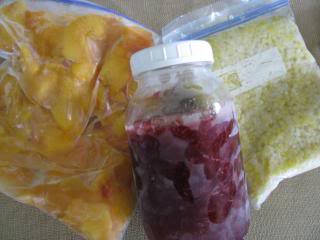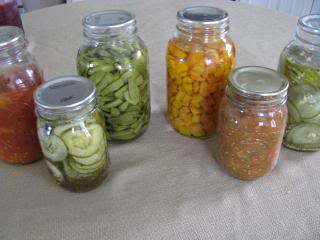Practical Life Skills and Nature Study
*Although this post is about home vegetable gardening, you’ll notice some of the pictures are from a field day class my children and I took from the University of Kentucky School of Agriculture. I wanted to encourage you that even those of us who have been gardening for years have room for growth. Your local extension agencies are a wealth of information for gardening from start to finish!

Growing a vegetable garden turns into a yearly study of botany at our house. Soil conditions, seed placement, sprouting, growth, care, weed management, safe insect and critter management – there’s A LOT to learn in the garden!
Every year we have the opportunity to discuss how seeds germinate (or tubers, or bulbs) and watch God work his botanic magic as tiny baby plants turn into giant adult plants, all from one little seed. We have the opportunity to discuss the roles of the flowers and pollinators in order for the “fruit” to follow. Every year we have the opportunity to discuss plant parts as we harvest roots, leaves and “fruits” to eat.
Yes, we do a yearly study of botany – and my children never have a clue science is in the air. The somewhat “hard labor” of weeding and harvesting gives them a hint that some sort of school might be in session, though! 🙂

Once harvested, nature study and practical life skills don’t stop! We “put away” as much of the harvest as possible through canning and freezing. Some people would say, “Whoa, there! I’m happy to do a little gardening in the name of ‘school’, but canning and freezing is way too much work!” And I gladly invite them over to my house to see just how little work it really is.
If you’ve never felt the utter satisfaction you get from growing a vegetable garden, you probably can’t imagine when I say there is even more satisfaction from “putting away” your harvest. God created us to work, and there’s just something about gardening and harvesting that feels more like the work He intended than other types of work. Does anyone else feel that way, too?

Your local extension office will have FREE detailed (and simple to understand) guides to help you learn how to do everything from making jam to freezing corn to canning green beans. Sometimes, they even offer classes! If not, find a friend who “puts away” food and sit with her one day as she works. Her experience and teaching will be invaluable.
As we (yes, my children are involved) break beans in preparation for canning, or slice corn off the cob in preparation for freezing, or peel the skin from tomatoes in preparation for juicing – the botany discussions don’t cease. And the conversations come from such a natural place that my children never once have rolled their eyes!

Enjoy your children in a fruitful activity that will be so much fun and so much learning that you will hardly believe you can count the hours as “school”. Oh, and if you didn’t grow a garden this year, you can always visit a local orchard, u-pick-it garden or farmer’s market for an abundance of produce on which you can practice your skills of “putting away”.
If you’d like a little help with some of the nature study topics you’ll face in the garden, our Wonderful Wildflowers unit has much teaching and many activities about the parts of a flower and pollination. And our Fruits and Nuts unit teaches about the process of fruits (and vegetables) growing from the flower. (You can find MANY other topics within both units, too!)
For your reference, here’s a list of what we grow that I’m able to “put away” and my preferred methods. Again, you can find easy directions for all of these at your extension office, or online.
- carrots – can in quart jars
- green beans – can in quart jars
- tomatoes, diced – can in quart jars
- tomato juice – can in quart jars
- cucumbers, dill slices – can in quart jars
- cucumbers, sweet slices – can in pint jars
- cucumbers, relish – can in pint jars
- corn – slice from cob and freeze in quart bags
- onions – slice and freeze in quart bags
- green/red peppers – slice and freeze in quart bags
- zucchini – shred and freeze in quart bags
- zucchini – make into breakfast loaves and freeze
- potatoes – place in dark, chilly part of basement
- peaches – slice and freeze in gallon bags
- apples – slice and freeze in gallon bags
- strawberries – slice and freeze in quart bags
- strawberries – make freezer jam in quart or pint jars
- blackberries – make freezer jam in pint jars
Happy gardening!
